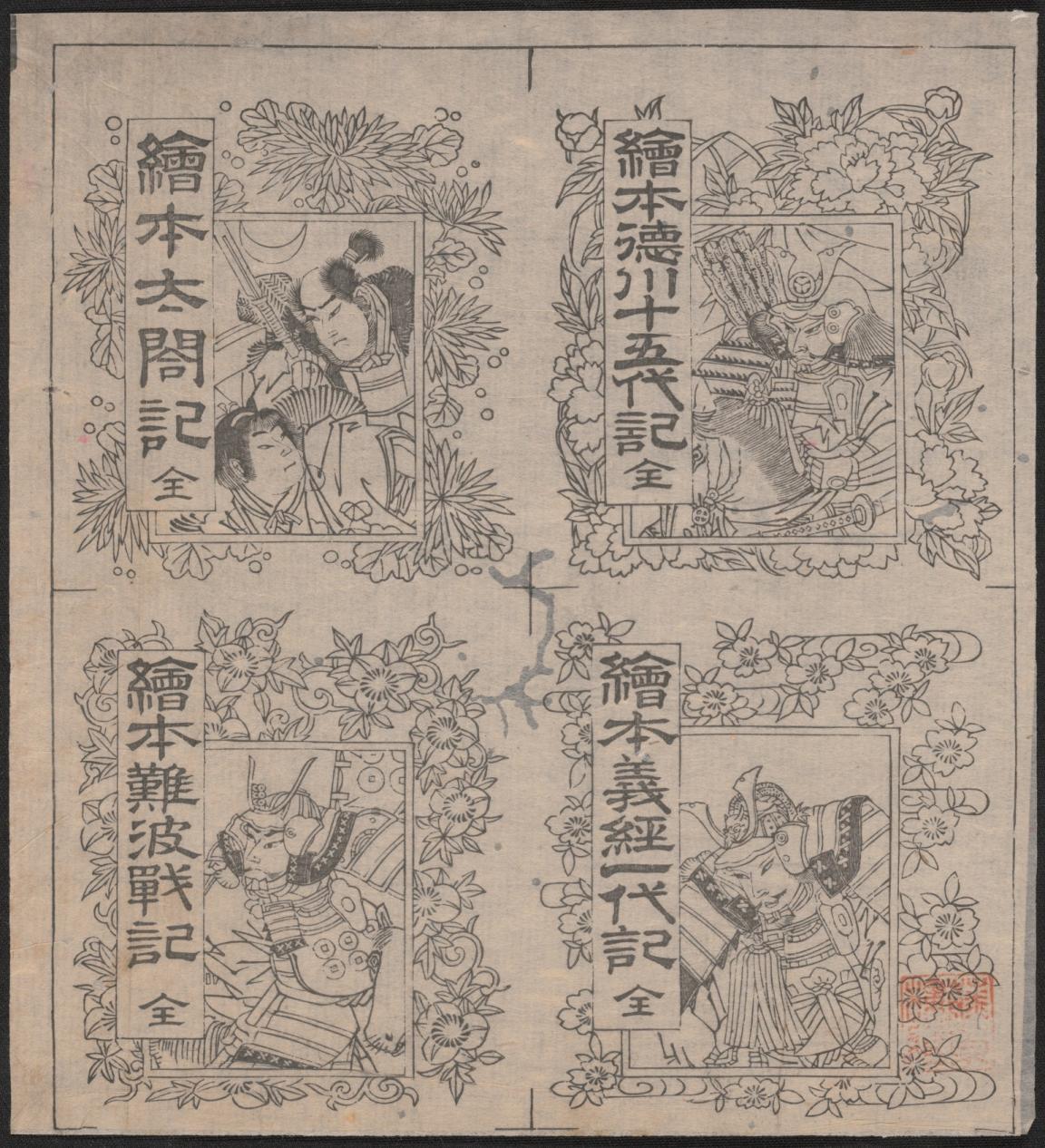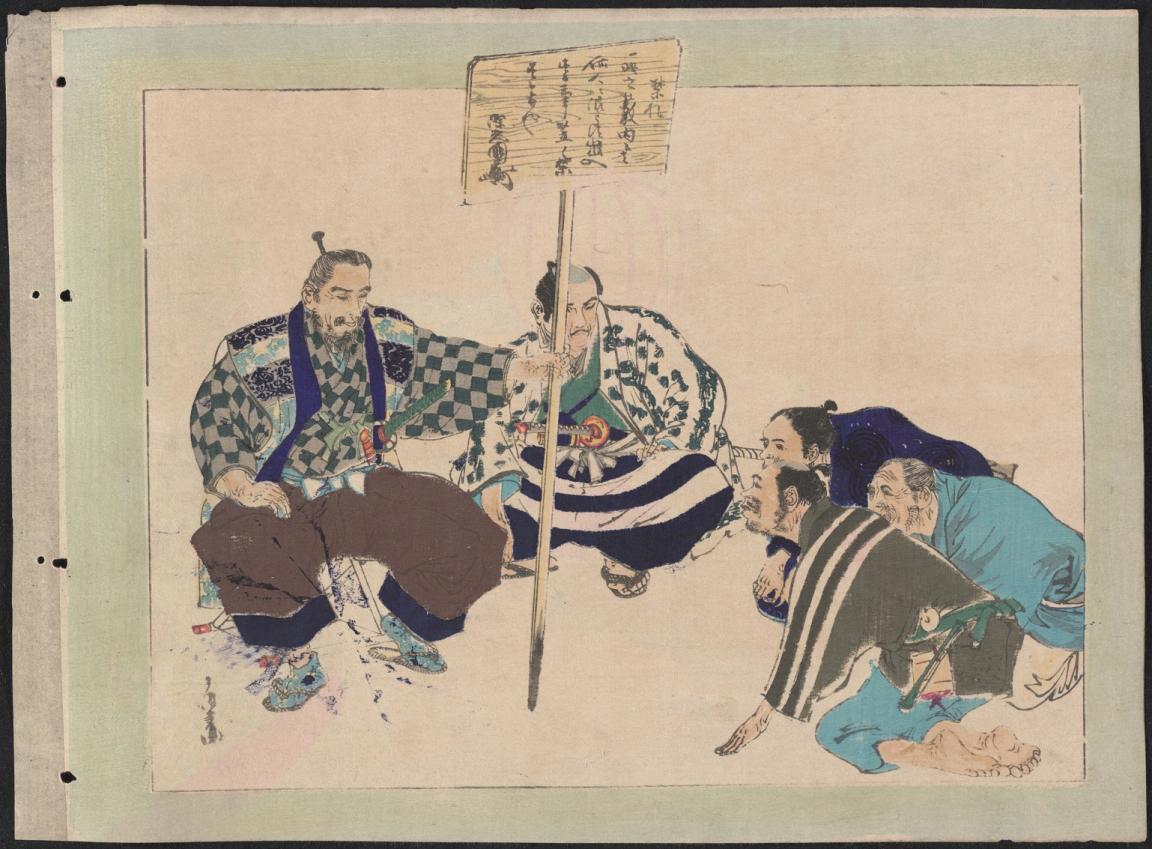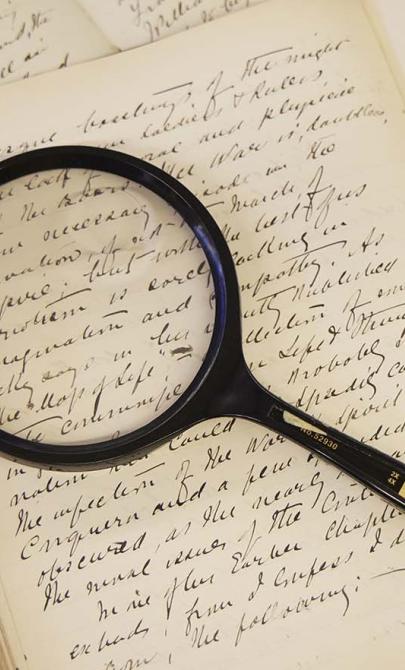The Tokugawa
A time of turmoil and change
The Tokugawa Shogunate
The Tokugawa Shogunate marked a significant turning point in Japanese history, following a long and tumultuous era known as the Sengoku Jidai (戦国時代 – Warring States Period). Spanning from 1467 to 1615, this period was characterised by civil war and conflict, culminating in the unification of Japan under Tokugawa Ieyasu.
The Sengoku Jidai
The Sengoku Jidai began with the Onin War, which effectively dismantled the feudal rule of the Ashikaga Shogunate. During the ensuing chaos, rival daimyos and factions fought for supremacy for nearly 148 years. It was within this backdrop of warfare that 3 prominent leaders emerged: Oda Nobunaga, Toyotomi Hideyoshi, and Tokugawa Ieyasu.

[Ehon cover drafts], nla.gov.au/nla.obj-151544183
[Ehon cover drafts], nla.gov.au/nla.obj-151544183
Key figures in the unification of Japan
Oda Nobunaga (1534–1582)
Rising to power in the mid-16th century, Oda Nobunaga became the Daimyo of Owari after a bloody succession crisis. With a strategic location in central Japan, he faced significant challenges from neighbouring daimyos.
- Major Victory: In 1560, Nobunaga achieved a remarkable victory against Imagawa Yoshimoto, despite being heavily outnumbered. This battle not only established his reputation but also allowed him to forge alliances with surrounding daimyos.
- Consolidation of Power: Nobunaga’s march into Kyoto in 1568 aimed to restore the Ashikaga Shogunate's power. However, he recognised that controlling Kyoto alone would not secure his dominance. He spent his remaining years consolidating power and strengthening his influence.
Toyotomi Hideyoshi (1537–1598)
Following Nobunaga’s death, Toyotomi Hideyoshi rose to prominence as his successor, continuing the unification efforts.
- Alliance with Tokugawa Ieyasu: Hideyoshi and Ieyasu became key allies during Nobunaga’s campaigns, securing power and prestige together. However, after Hideyoshi’s death, a power struggle ensued between his loyalists and Ieyasu's supporters.
Tokugawa Ieyasu (1543–1616)
Emerging victorious from the power struggle, Tokugawa Ieyasu established himself as the supreme leader of Japan.
- Critical Battles: Ieyasu's victories at the Battle of Sekigahara in 1600 and the Siege of Osaka in 1615 solidified his control over Japan.
- Establishment of Edo Bakufu: Preferring stability over innovation, Ieyasu established his government in Edo (modern Tokyo) and adopted the title of Shogun. He assured the Imperial Court in Kyoto of their safety, allowing them to maintain a ceremonial role while he exercised real power.
Activity 1: Understanding historical figures
Explore how we learn about key historical figures like Oda Nobunaga, Toyotomi Hideyoshi, and Tokugawa Ieyasu.
- Ask students to assess the value of primary and secondary sources in researching historical figures.
- Ask students to find a primary source artifact related to one of the leaders (for example, a letter, weapon, or piece of art) and discuss what insights it offers about that individual’s life and influence.

Toshitsune Inano, Tokugawa Mitsukuni [Tokyo], 1880, nla.gov.au/nla.obj-152444502
Toshitsune Inano, Tokugawa Mitsukuni [Tokyo], 1880, nla.gov.au/nla.obj-152444502
The Edo period
The Tokugawa Shogunate ruled Japan for over 250 years, from 1603 to 1867. This era, known as the Edo period, was marked by relative peace, stability, and isolation from foreign influence, allowing for cultural and economic development.
Activity 2: Inter-class relationships
Ask students to compare the relationship between the emperor and the shoguns to a modern constitutional monarchy. What are the differences and similarities?



